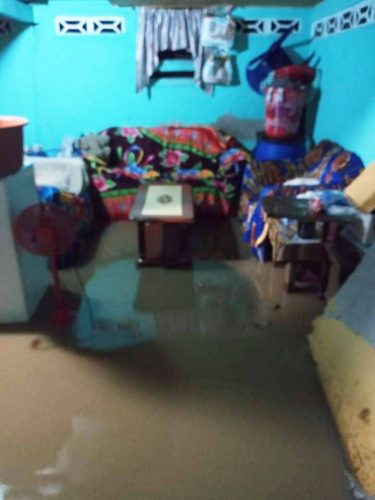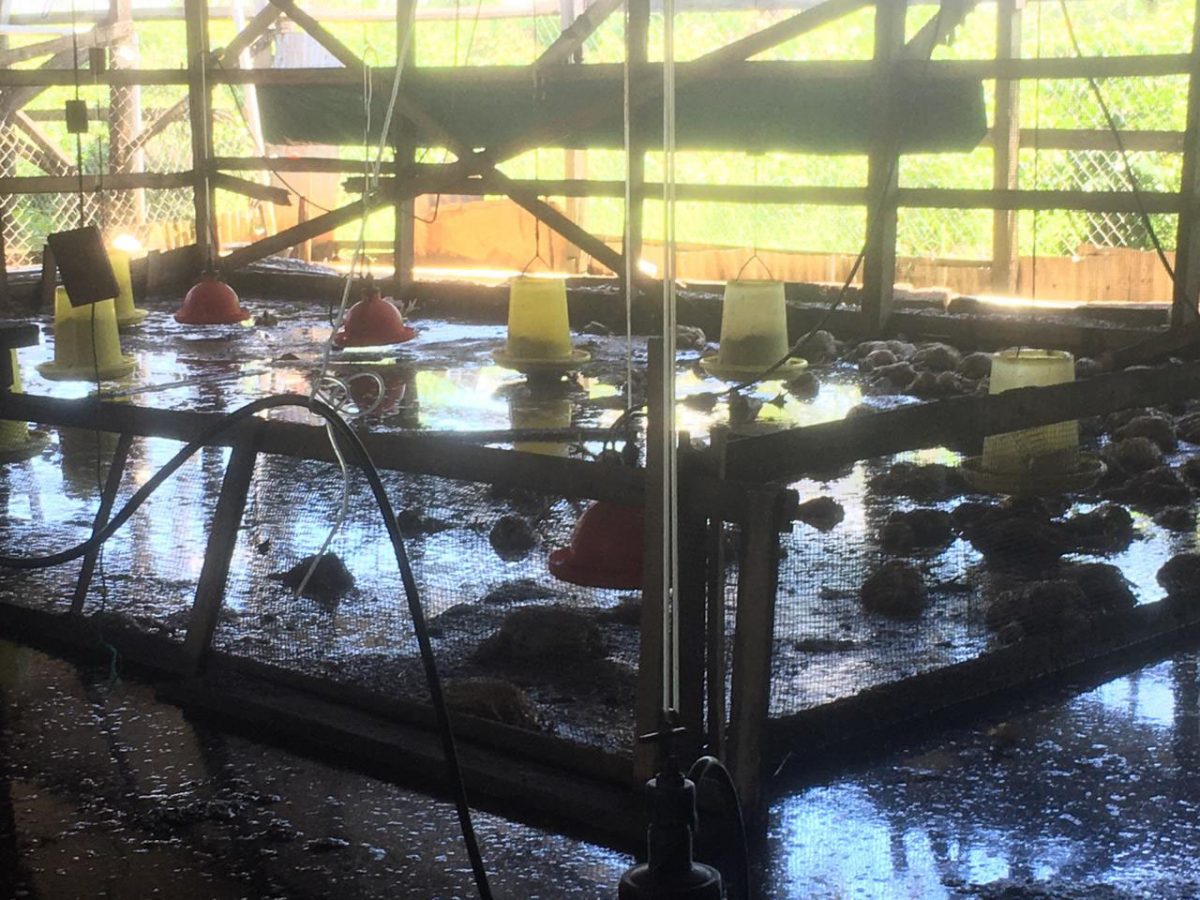Residents and livestock farmers along the Upper Corentyne area are now counting their losses after a major flood yesterday destroyed several chicken farms and gardens and damaged household items.
Anil Ramjahan, Chairman of the Number 52/74 Neighbourhood Democratic Council (NDC), explained that residents of Numbers 52, 53, 54, 57, and 58 villages were affected.
By yesterday afternoon, the floodwaters finally started to recede, albeit slowly, residents noted.

According to the residents, it rained from about 6 pm on Friday evening to around 4 am on Saturday morning. However, they suspected that the effect of the heavy rainfall was exacerbated by the clogged drains in area, resulting in the major flood.
One of the largest livestock farmers in the community, Abdul Rasheed Latiff, 59, suffered over $4 million in losses after his chicken farm, which is located aback Number 57 Village, Corentyne, was submerged.
Sunday Stabroek was told that the livestock farmer was only able to save about 300 chickens, which were moved to higher ground. “I have another pen so when I got here we start move as much as we could. When I got here around 5.30 am, the water was about 18 inches,” he recounted.
At 5 pm yesterday afternoon, Latiff lamented that there was still water in his chicken farm. “There is still water here. I got my workman them trying to remove the dead chicken but the water still here,” he added.
The man said the authorities need to intervene and assist those that are affected.
Meanwhile, other residents were unable to do anything to save their smaller farms and gardens, while some were forced to remove household items to higher ground.
Yesterday most of the residents found themselves having to forego breakfast and lunch as they were too busy dealing with the situation.
Some said that after noticing that their neighbours’ kitchens were flooded, they too started to place sandbags around their houses but the water only kept rising and resulting in them having to move household items to their upper flats.
Artie Persaud, 40, of Lot 108 Number 58 Village, Corentyne, stated that she woke up around 3 am to start cooking for her husband to go to work when they discovered that their entire kitchen along with their yard was flooded.
As of yesterday afternoon around 4 pm, Persaud said, that the water had started to recede slowly. “We trying to bail we kitchen but the water still deh in the yard and road but it going slow.” She added, “Me can’t tell you if anything damage because me na try nothing yet. Me na want put current and gas and then water.”
Another resident of the area, Yashoda Ishwar, said, that she woke up around 4 am and discovered that her yard and lower flat were flooded also.
However, the woman said that she tried to remove some items to higher ground.
Other residents who were stuck in the upper flat of their homes told this newspaper that they had lost groceries and suffered damage to household items.
The majority of the residents yesterday noted that they have been pleading with the authorities at the NDC to clear the drains, since this is the third time for the year that there has been a flood in the area.
Residents also lashed out at the sluice operators for failing to open the koker doors in time.
However, the NDC chairman said that after residents complained that the kokers were not opened, he met with the operators and ordered them to open the kokers immediately in the hope that that would assist the situation yesterday.
The chairman disclosed that he and some other officials visited the villages yesterday and assessed the situation, after which a mini-excavator was deployed to begin works that they hope will provide relief.
Furthermore, Ramjahan said he spoke with the Regional Chairman, David Armogan, who promised to send another mini-excavator to assist.
According to Ramjahan, although it was reported that it had rained for several hours, he said it is the “drainage network” that led to the heavy flooding. “We clean the 57/58 drains last year with the mini excavator and workers, but with the drainage network the residential water goes to the reef then residential water and reef water comes together to go to the trench,” he explained.
Ramjahan also noted that if the situation does not improve then they would have to consider cutting the streets to install tubing in an effort to bring some sort of relief.





